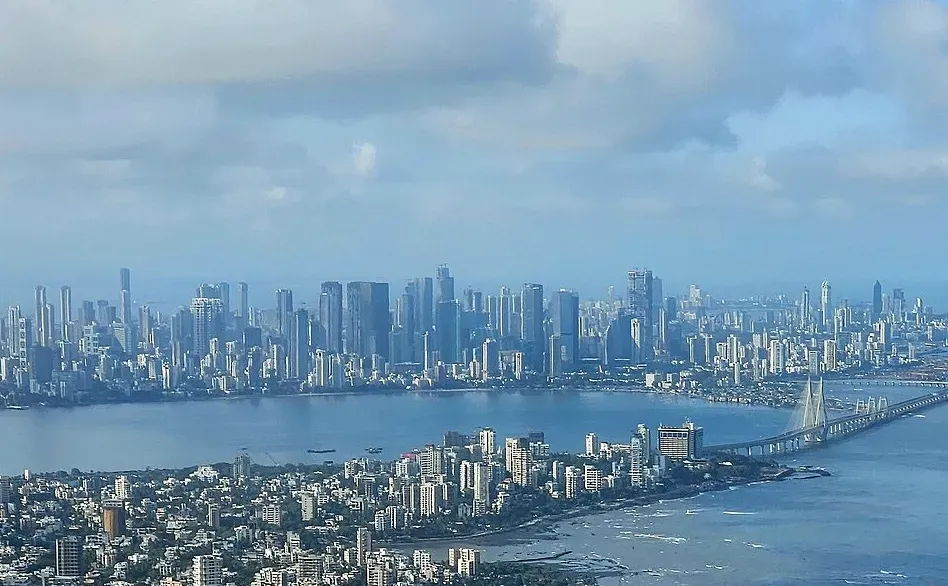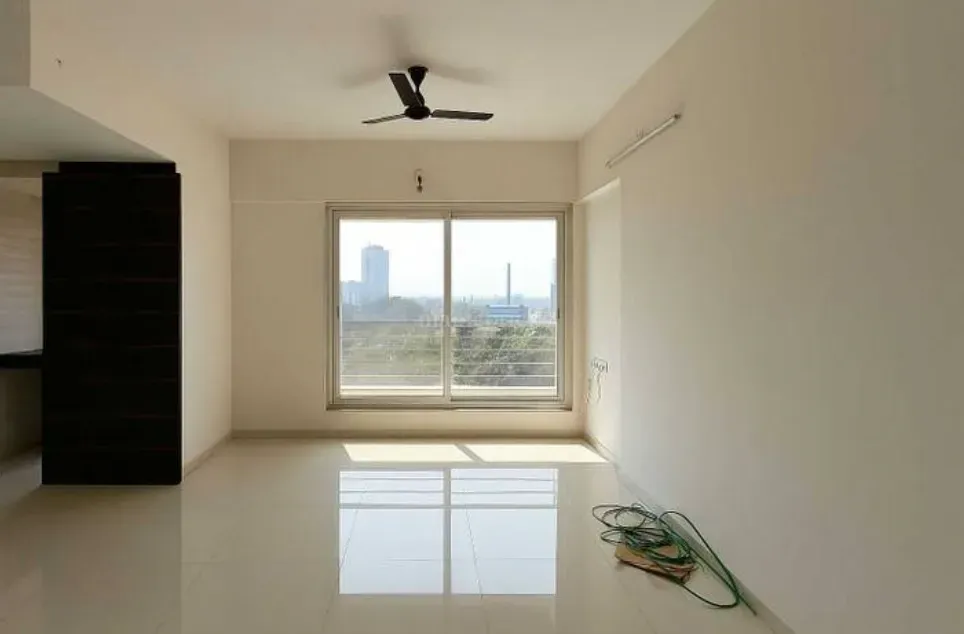How Much Home Loan for 1 BHK Flat in Mumbai in 2025 | Step-by-Step Guide

By
Shrusti Naik
Posted on September 23, 2025. 10 mins

Introduction

Buying a 1 BHK flat in Mumbai remains a major investment decision, even for first-time homebuyers. With property prices, loan interest rates, regulations, and policies changing regularly, one must understand how much loan is required after all costs, what eligibility norms banks require, and how loans are structured. This guide is tailored for Mumbai, 2025, using the latest data and regulations, so you can plan realistically. Before you move ahead, check out If It's Worth Buying a 1BHK in Mumbai in 2025, or Should you Wait?
1. What is the Price of a 1 BHK in Mumbai?
| Locality / Region | Typical 1 BHK Size (sq ft) | Price Range ₹ (INR) | Price per sq ft approx. |
|---|---|---|---|
| Santacruz East, Kalina, Vakola etc | 500-650 sq ft | ₹ 1.2 crore to ₹ 1.6 crore | ~ ₹ 18,000-₹ 28,000 / sq ft |
| Powai (newer projects) | ~720 sq ft | ~ ₹ 1.39 crore | ~ ₹ 1.39 cr / 720 ≈ ₹ 19,300 / sq ft |
| Western Suburbs, Outer Localities (Virar, Mira Road, etc.) | 400-600 sq ft | ₹ 35-50 lakhs in many outer suburbs; some ~ ₹ 80-100 lakhs closer inwards | |
| Premium / Central Localities (South / Bandra / Bandra East etc.) | 450-600 sq ft | ₹ 2.0-2.5 crore+ for prime localities (resale or new) |
Key Stats (2025, Mumbai):
- Minimum: ~ ₹ 35–40 lakhs for very basic 1 BHK in outer most suburbs.
- Typical Mid-Mumbai 1 BHK (good locality, decent amenities): ₹ 1.1-1.6 crore.
- Luxury / Central: ₹ 2+ crore depending on locality, age, amenities.
Also read, Which Areas Offer the Best Affordability and ROI in Mumbai?
2. Key Home Loan Norms & Rates (India / Mumbai, 2025)
-
Repo Rate: As of 6 June 2025, the RBI repo rate is 5.50%.
-
Interest Rates on Home Loans: Many banks now offer home loan rates starting around 7.35%-8.75% p.a. (for certain cases) up to ~9-10%+ depending on loan amount, location, credit score. For example, ICICI Bank has rates ~ 8.75%-9.40% for salaried customers for up to ~₹35 lakh loans.
-
Loan-to-Value (LTV) Rules (RBI / banking regulations):
- For property value ≤ ₹30 lakh: up to 90% LTV.
- For value between ₹30-75 lakh: about 80% LTV.
- For value > ₹75 lakh: about 75% LTV.
-
Other Regulations:
-
No prepayment penalties for floating-rate loans. Fixed-rate home loans may have prepayment charges (capped, e.g. ~3%) if prepayment happens early.
-
Banks use external benchmark / repo / RLLR / EBLR linked rates. After RBI cuts, many banks have reduced their home loan interest rates accordingly.
-
3. Step-by-Step: How to Calculate “How Much Loan You Need”
Let’s walk through the steps using a hypothetical scenario, and then show formulas you can adjust.
Step A: Decide Your Budget / Which Locality
First pick locality (outer, mid, central) and expected size in sq. ft. Also whether new project or resale, amenities etc.
Example 1 (Mid area): You want a 1 BHK in Santacruz East of ~550 sq ft. From above, average ~ ₹ 1.3 crore.
Step B: Estimate Down Payment / Up-front Costs
You will need to pay more than just the quoted flat cost:
- Down payment (property cost minus loan) per LTV rules.
- Stamp duty + registration charges (Mumbai approx ~5-6% vs different sub-districts; depends).
- GST (if project under construction), broker fees etc.
Say the flat price is ₹1.30 crore, stamp duty/registration ~ 5.5% → ~ ₹ 7.15 lakhs extra. So your total cost ≈ ₹1.37-1.40 crore depending on other costs.
Step C: Compute Loan Needed Based on LTV
If flat price + other eligible components = ₹1.37 crore, and if flat price (property value) > ₹75 lakh, then LTV ~75% applies. So loan ≤ 75% of property value:
Loan = 0.75 × property price (not including stamp duty etc.) = 0.75 × ₹1.30 crore = ₹ 97.5 lakh.
You must provide rest (~₹ 32.5 lakh) as down payment (plus stamp duty etc.)
If your target flat cost is lower (say ₹50 lakh), then LTV 80-90% may apply, so you may borrow more fractionally.
Step D: Evaluate EMI / Interest / Tenure
Using interest rate & tenure to see if EMI fits your monthly capacity. Some typical numbers:
Let’s assume:
- Loan amount: ₹ 97,50,000
- Interest rate: 8.75% p.a. (floating)
- Tenure: 20 years (240 months)
Then EMI ≈ use formula EMI = [P × r × (1 + r)^n] / [(1 + r)^n − 1]
Where r = monthly rate = 8.75% /12 ≈ 0.729% n = 240
EMI works out to roughly ₹ 82,000–₹ 85,000 / month (approx). (Ballpark; actual depends on bank’s exact rate, other charges.)
You must check whether this EMI is manageable given your income, other EMIs etc.
Step E: Final Loan Needed
So, the needed loan = property cost × LTV (i.e. only part financed by bank). Your own investment = down payment + all extra costs.
4. What Determines How Much Loan You
Banks will evaluate your eligibility on:
- Income: Salaried / self-employed; stability; minimum thresholds. Some banks require minimum gross income per annum (or minimum monthly salary).
- Credit Score: Better score = possibly lower spread, better interest.
- Existing Liabilities / EMIs: Bank will ensure your total EMIs + new home loan doesn’t exceed a certain proportion of your income.
- Age & Tenure: Younger borrowers can choose longer tenures (up to 30 years in many cases), older ones lower. Maximum age on loan maturity often ~70 years for self-employed, ~65 etc.
- Property Type, Locality, Project Status (under-construction vs RERA approved) etc.
Also check out, The Ins and Outs of Property Management for Landlords: Maximizing Your Rental Income
5. Example Scenarios
Here are two example scenarios to illustrate how much loan one needs / affordable.
| Scenario | Locality & Flat Price | LTV Assumed | Loan Amount Needed | Down Payment + Extras | Estimated EMI (20 yrs @ ~9%) |
|---|---|---|---|---|---|
| Outer Suburb | 1 BHK, Virar West ~₹ 45 lakh | 90% (price ≤ ₹30-75 lakh; here below threshold so maybe 90%) | ₹ 40.5 lakh | ~₹ 4.5 lakh + stamp duty etc (₹ 2-3 lakh) | ~₹ 37,000–₹ 40,000 / month |
| Mid / Prime Area | Santacruz East / Kalina, ~₹ 1.30 crore | 75% | ~₹ 97.5 lakh | ~₹ 32.5 lakh + ~₹ 7 lakh stamp duty etc | ~₹ 82,000–₹ 85,000 / month |
These help you test what you can afford vs how much you need to borrow.
6. Other Helpful Things & Subsidies
- PMAY / Pradhan Mantri Awas Yojana: If you qualify under EWS/LIG/MIG, there may be subsidy schemes for interest or credit linked subsidy. But in many cases, 1 BHK in Mumbai at those higher price levels may not qualify. Check your eligibility and zone.
- Tax Benefits: Under Section 80C & 24(b) of the Income Tax Act – interest paid on home loan (up to ₹2 lakh) and principal repayment (up to ₹1.5 lakh) can be claimed subject to conditions. Helps reduce net EMI burden.
- Broker / Developer Discounts: Sometimes under-construction flats might have payment plans. Also early possession or booking discounts.
You may want to check Understanding Real Estate Taxes
7. Action Plan: How To Decide How Much Loan
- Fix your maximum budget including all extras (flat cost, stamp duty, registration, broker/other charges).
- Survey localities you are okay with, compare price ranges & sq ft.
- Determine what LTV you can get (based on price slab).
- Use the EMI you are comfortable with (rule of thumb: EMIs ≤ 40-50% of your take-home income, after other commitments).
- Plug into a home loan calculator (many banks & housing finance firms online). Adjust tenure & loan amount to match EMI comfort.
- Factor in buffer for rate changes (if floating rate) and maintenance & future costs.
Also read, What the RBI Repo Rate Cut Means for Homebuyers: EMIs Just Got Cheaper
Conclusion

- The cost of a 1 BHK in Mumbai varies widely: ₹ 35-50 lakh in outer suburbs to ₹ 1.2-1.6 crore (or more) in mid to prime areas.
- Based on RBI’s LTV rules, a buyer may need to arrange 25-40% down payment / own funds, depending on flat price slab.
- With current home loan rates (floating) of about 8-9%+, tenures up to 20-30 years, your monthly EMI can become a significant recurring cost.
- Thoughtful planning of locality, price, income, and loan eligibility will help you decide exactly how much loan you need and can afford rather than over-stretching.
For those in pursuit of their dream home, investment opportunities, or a sanctuary to call their own, Jugyah provides top housing solutions with its intelligent technology.
Frequently Asked Questions
-
What is the minimum income needed to get a home loan for a 1 BHK in Mumbai? It depends on bank and loan amount. Some banks require gross annual income of at least ~₹1 lakh to ₹1.5 lakh for very small loans; for larger loans (close to ₹1 crore), you will need higher steady income, good credit score, and low existing liabilities. (See eligibility norms of IDFC First, PNB etc.)
-
Can I get 90% loan (higher LTV) on a 1 BHK flat if it costs > ₹75 lakh? No — RBI’s current norms limit LTV to about 75% when property cost exceeds ₹75 lakh. For flats costing between ₹30-75 lakh, LTV is about 80%, and for ≤ ₹30 lakh, up to 90%.
-
What interest rate can I expect for a home loan in 2025 in Mumbai? Floating rate home loans tend to start from about 7.35-8.75% p.a. for good borrowers in favourable conditions; for more premium projects, or if credit score / down payment smaller, rates may be somewhat higher.
-
How does the RBI’s repo rate affect my home loan EMI? The repo rate is the benchmark for many external benchmark / repo linked lending rates. When RBI cuts repo rate (recent cut in June 2025 lowered it to 5.50%), banks tend to reduce their interest spreads / base, which can reduce your home loan rate and thereby EMI.
-
Are there government subsidies or tax benefits that reduce my effective loan burden? Yes. If you qualify under PMAY (for eligible income segments), you may get credit linked subsidy. Also income tax benefits: interest up to ₹2 lakh under Section 24(b) and principal repayment under Section 80C (up to ₹1.5 lakh) reduce your net cost. Always check you meet criteria and that property/project is approved etc.